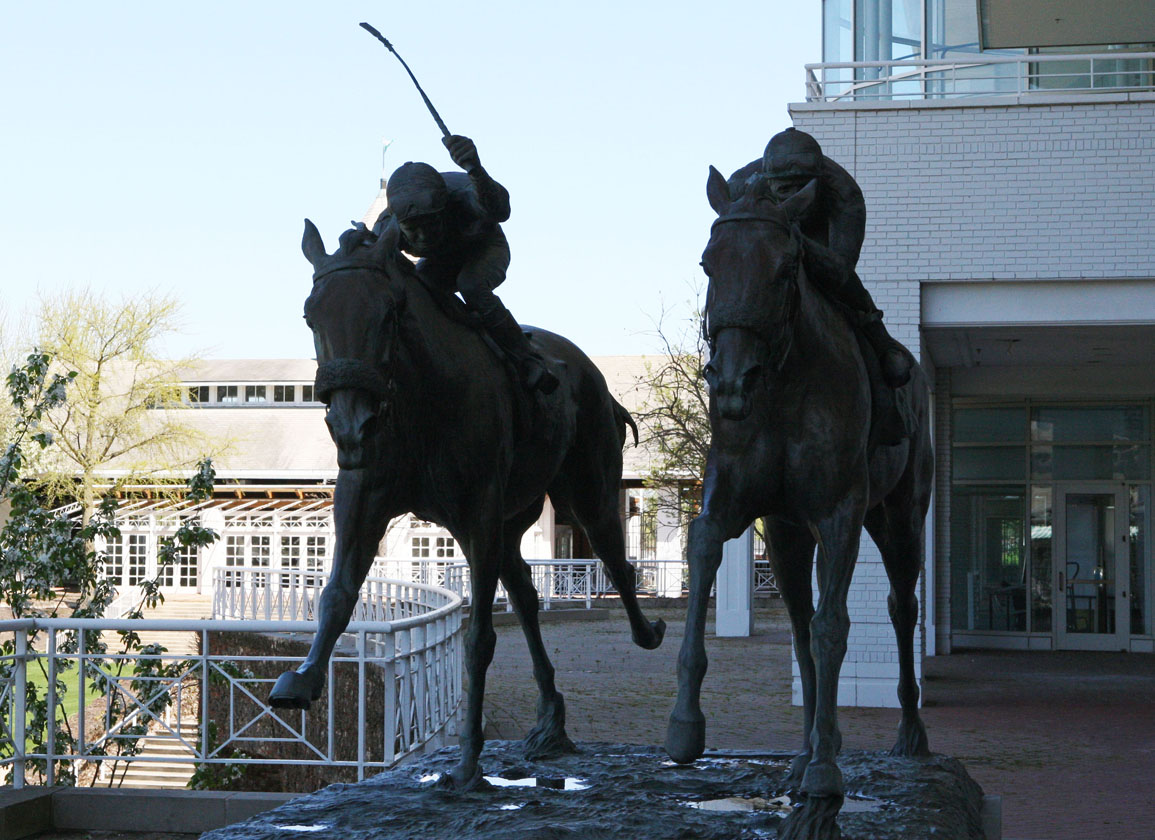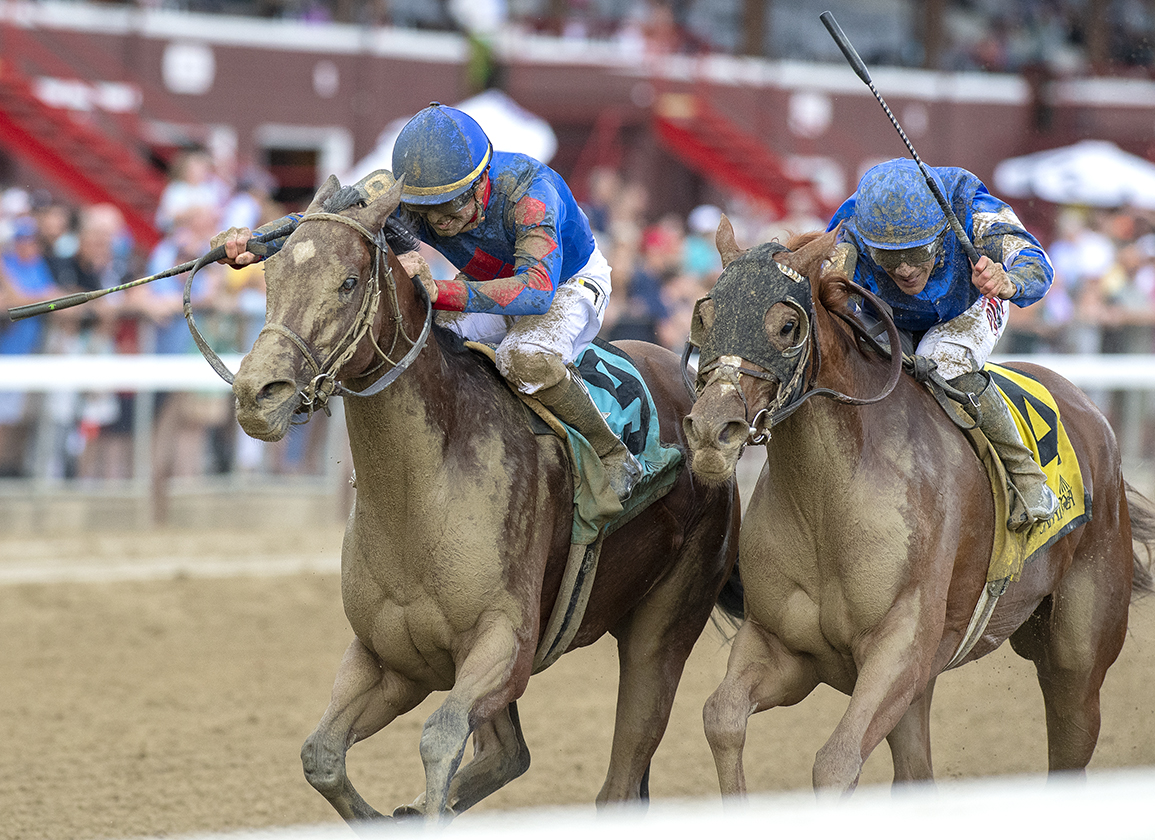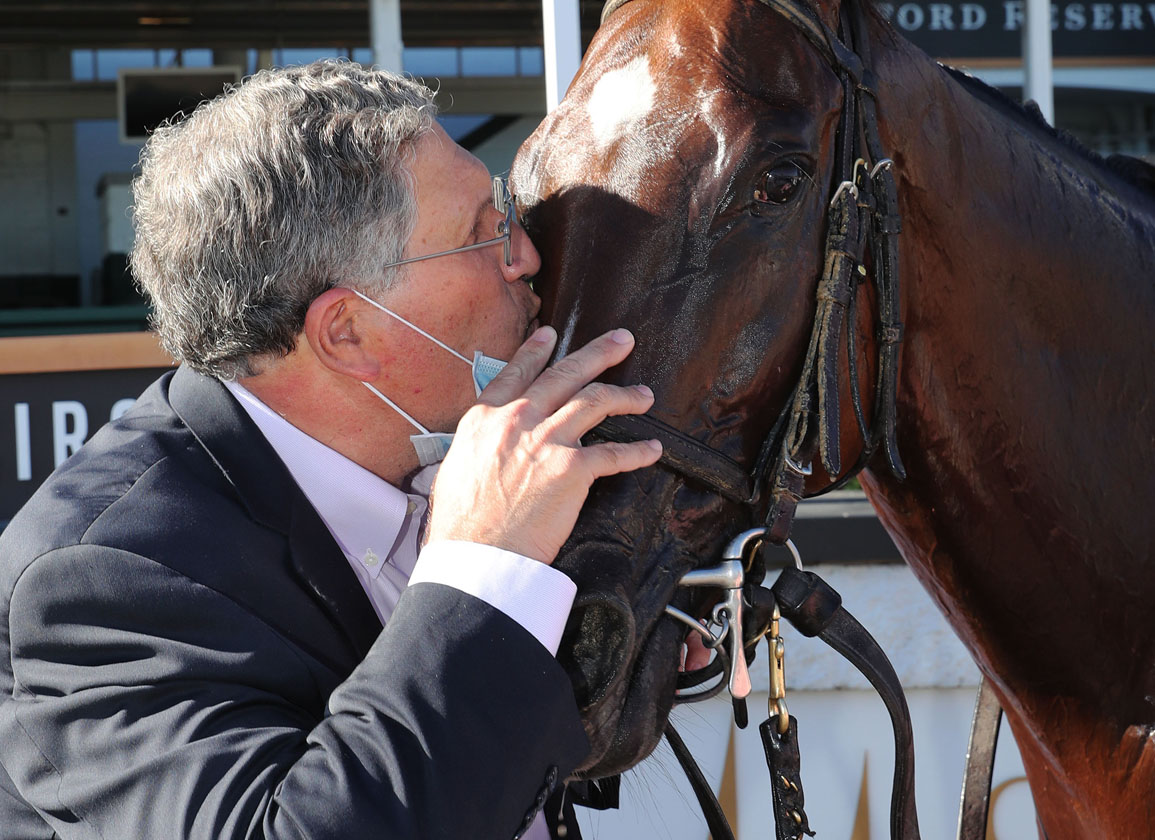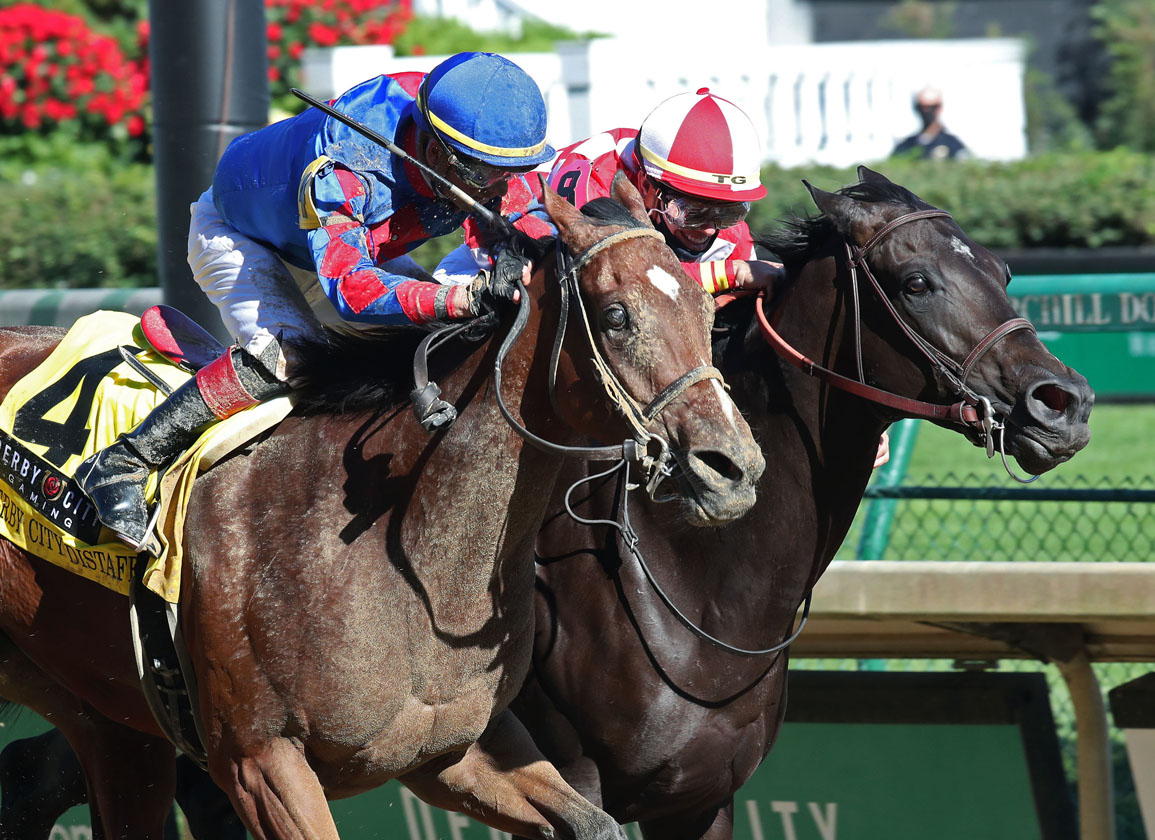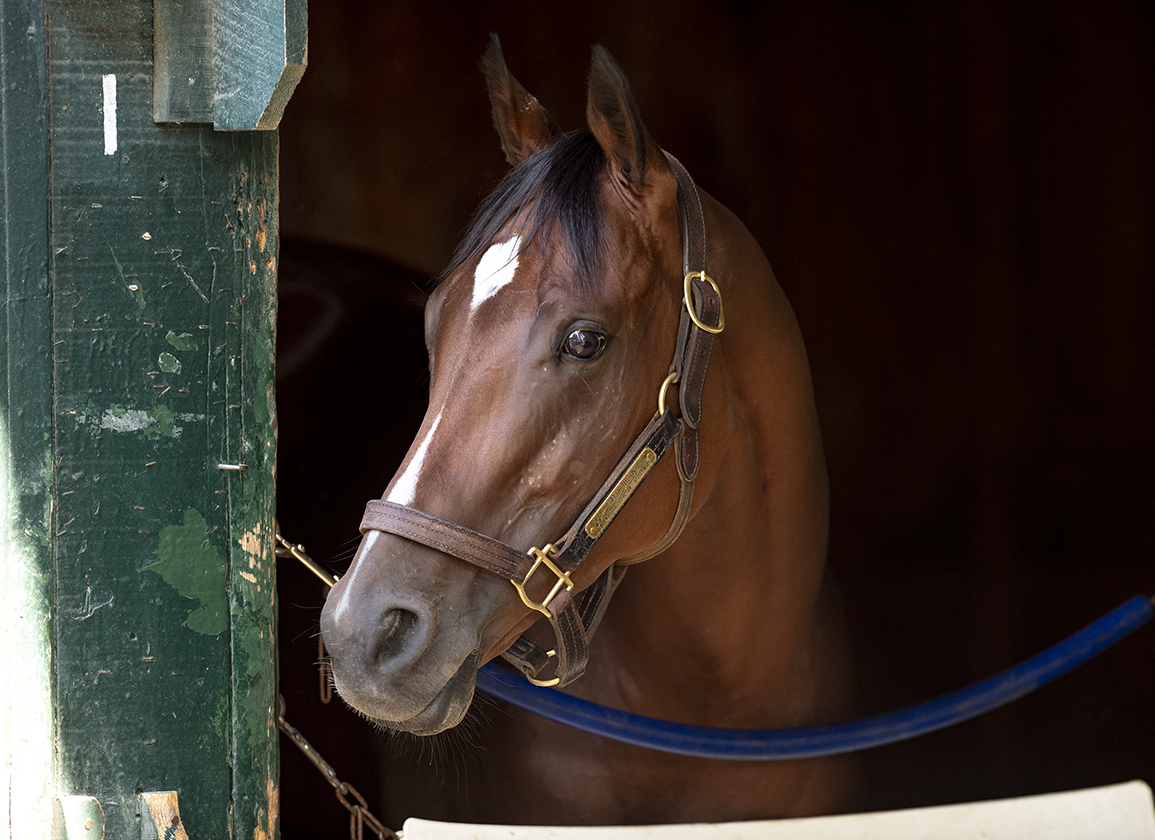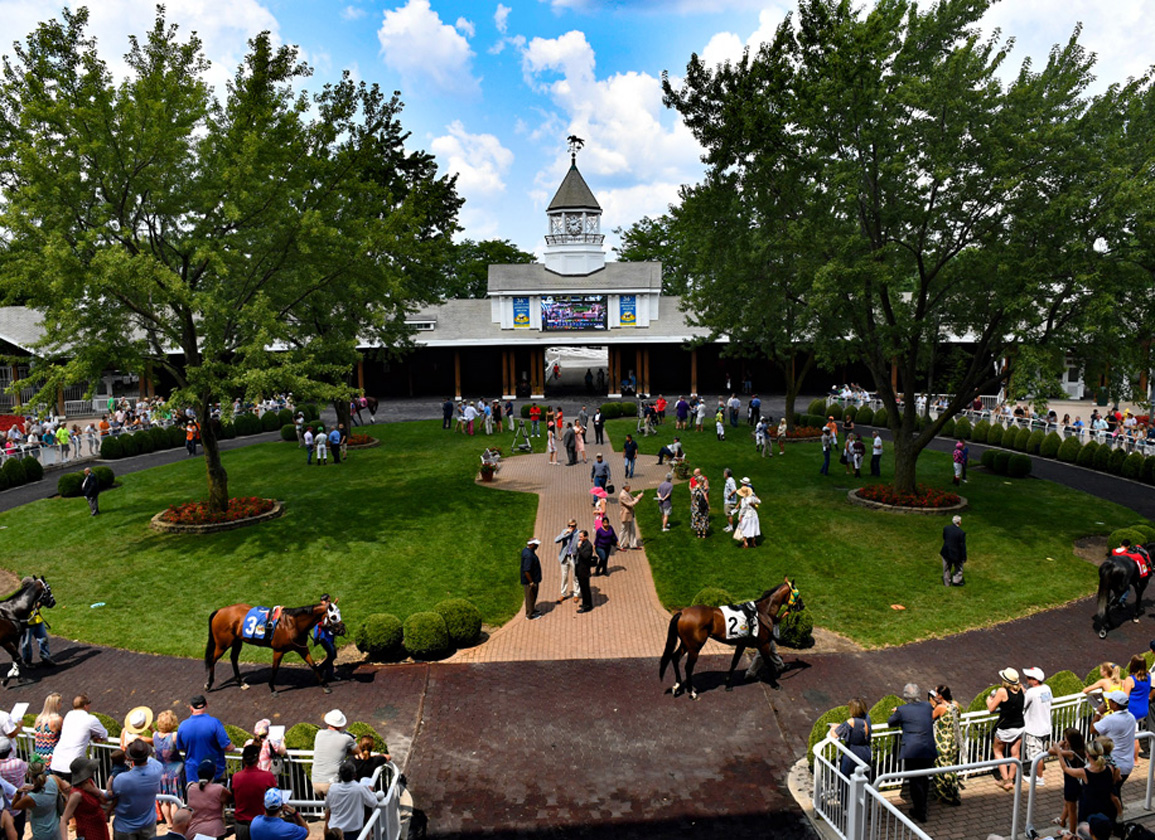ARLINGTON HEIGHTS, IL–They are a dime a dozen nowadays, but back in 1981, the idea that a track would offer a $1-million purse for a Thoroughbred horse race was about as far-fetched as civilians building their own rockets for space travel.
As president and chief executive officer of Arlington Park, the late Joe Joyce conceived of and brought to fruition a race that would be called the Arlington Million, an event aimed at drawing the best horses to race over the renowned Arlington turf course not just those based domestically, but also from Europe. A race that would attract not only the best equine athletes, but also the most gifted jockeys and the most successful trainers.
“The concept of having a million-dollar race and making it international, that germinated and it was done in a short period of time,” Arlington's Richard L. Duchossois told ESPN's Thoroughbred Classics program. “Joe Joyce traveled around the world, Nick Clarke from the International Racing Bureau, everyone combined their thoughts and ideas and it became an instant success and immediately put Arlington back on the map.”
On Aug. 30, 1981, the dream became a reality. The inaugural Million drew the sort of field its creators could only have dreamt about. Representing the United States was 6-year-old John Henry from the California barn of Ron McAnally, who had won the first of his five divisional Eclipse Awards as this country's top grass horse with four Grade I victories in 1980. The former claimer had picked up in 1981 where he left off the previous season, winning his first four starts, including the GI Santa Anita H. on the dirt and the GI San Luis Rey S. and GI Hollywood Invitational H. on the grass. He was the pin-up horse that could help put the Million on the map, the one the organizers would have wanted most. Bill Shoemaker, who'd ridden him only once prior–a victory in that year's GIII Sword Dancer S., then run at Belmont Park–was in for the ride.
The domestic challenge also included the Rokeby Stable-owned Virginia-bred Key to Content, who earned his way into the Million courtesy of a narrow defeat of Canada's Ben Fab in that year's GI United Nations S. at Atlantic City Racecourse. George Martens had the riding assignment for MacK Miller. Leslie Combs' Rossi Gold was the local hero, having won the GII Stars and Stripes H. and Swoon's Son H. prior to the Million, for which he was the 19-5 second choice in the wagering with Pat Day at the controls.
Four horses were lured from Europe for the Million, the best-backed of which was French-based Argument (Fr), that country's reigning champion 3-year-old, whose first trip to the States yielded a narrow victory in the 1980 GI Washington D.C. International S. at Laurel with Lester Piggott up. Winner of the 1981 G2 Prix d'Harcourt and G1 Prix Ganay, Argument was a 7-1 chance with Angel Cordero, Jr. in the irons.
Piggott had the call in the Million atop 3-year-old filly Madam Gay, one of three females in the field, who had won the 1981 G1 Prix de Diane ahead of a runner-up effort behind Shergar in the G1 King George VI and Queen Elizabeth Diamond S. at Ascot.
In addition to the world-class riders already mentioned, the 1981 Million also featured jockeys named Delahoussaye, Samyn, Brumfield, Toro, Pincay Jr., Cauthen and Hawley. The stars had come to play, as hoped. And, as it turns out, the stars were aligned for a truly memorable two minutes and change of theater.
WATCH: John Henry noses out The Bart in Arlington Million I
A History-Making Day…
Broadcast by NBC to a worldwide audience in 27 countries, the Million was run on turf heavily affected by week-long rains. McAnally expressed some concern about the underfoot conditions, but John Sullivan, the trainer of 40-1 The Bart liked the way his charge had galloped over the track in the days leading up to the race.
Legendary track announcer Phil Georgeff exclaimed, “The flag is up,” as was his custom, and the inaugural Million field was sent on their way. Key to Content was kicked straight into the lead by Martens, but Eddie Delahoussaye asked The Bart to keep close to that one early and the duo had things mostly to themselves over the soggy going through a half-mile in :50 1/5. Shoemaker had John Henry positioned in about eighth spot with some cover as they turned up the backstretch. By the time they had reached the midway point, John Henry had found his way down to the inside as The Bart continued to hound Key to Content from the outside. Delahoussaye could wait no more and allowed The Bart to claim the pacesetter with a little more than 2 1/2 furlongs from home and set sail for the wire.
With Georgeff's trademark, “Here they come spinning out of the turn!” ringing through the grandstand, John Henry was finding his best stride and came out and around Madam Gay at the three-sixteenths pole with every chance if good enough. The Bart carried a clear advantage into the final eighth of a mile, boxed on gamely and looked to have the race won to the naked eye as John Henry came with one desperate final lunge. Georgeff was unwilling to call a winner, but NBC rolled the dice, declaring that The Bart had gotten the better of the photo. The picture told a different story and the Arlington Million was off to a flying start.
“Right when we got about six jumps before the wire, I could see it was John Henry,” Delahoussaye told Thoroughbred Classics. “I looked out the corner of my eye, I knew who it was. I had a feeling if any horse was going to beat him, it was going to be him. I was right, unfortunately.”
For his part, Shoemaker wasn't convinced John Henry had gotten the better of the bob.
“Eddie was galloping out, I was trying to catch up with him, I was going to try to save $20,000 [of the purse money],” 'The Shoe' told Thoroughbred Classics. “I couldn't catch him.”
Shoemaker told the Associated Press after the win: “This is the greatest race I've ever ridden in. He's a great horse and this was a great field.” The finish of the inaugural Million is memorialized in the 'Against All Odds' statue that overlooks the Arlington paddock.
John Henry was upset in the 1983 Million by Tolomeo (Ire), but became the only two-time winner of the race with a more decisive victory in 1984.
The name has changed. The purse is now six figures, not seven. It figures to be the final renewal, sadly, at least at Arlington. But the memories of those 10 furlongs on that final Sunday of August now 40 years in the rear view will never be torn down.
The post Original Seven-Figure Race Exceeded Expectations appeared first on TDN | Thoroughbred Daily News | Horse Racing News, Results and Video | Thoroughbred Breeding and Auctions.
